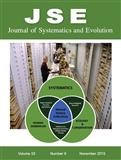GaneshPrasad ArunKumar, Lan-Hai Wei, Valampuri John Kavitha, Adhikarla Syama, Varatharajan Santhakumari Arun, Surendra Sathua, Raghunath Sahoo, R. Balakrishnan, Tomo Riba, Jharna Chakravarthy, Bapukan Chaudhury, Premanada Panda, Pradipta K Das, Prasanna K Nayak, Hui Li, Ramasamy Pitchappan, The Genographic Consortium
The origin and dispersal of Y-Chromosomal haplogroup O2a1-M95, distributed across the Austro Asiatic speaking belt of East and South Asia, are yet to be fully understood. Various studies have suggested either an East Indian or Southeast Asian origin of O2a1-M95. We addressed the issue of antiquity and dispersal of O2a1-M95 by sampling 8748 men from India, Laos, and China and compared them to 3307 samples from other intervening regions taken from the literature. Analyses of haplogroup frequency and Y-STR data on a total 2413 O2a1-M95 chromosomes revealed that the Laos samples possessed the highest frequencies of O2a1-M95 (74% with >0.5) and its ancestral haplogroups (O2*-P31, O*-M175) as well as a higher proportion of samples with 14STR-median haplotype (17 samples in 14 populations), deep coalescence time (5.7 ± 0.3 Kya) and consorted O2a1-M95 expansion evidenced from STR evolution. All these suggested Laos to carry a deep antiquity of O2a1-M95 among the study regions. A serial decrease in expansion time from east to west: 5.7 ± 0.3 Kya in Laos, 5.2 ± 0.6 in Northeast India, and 4.3 ± 0.2 in East India, suggested a late Neolithic east to west spread of the lineage O2a1-M95 from Laos.

